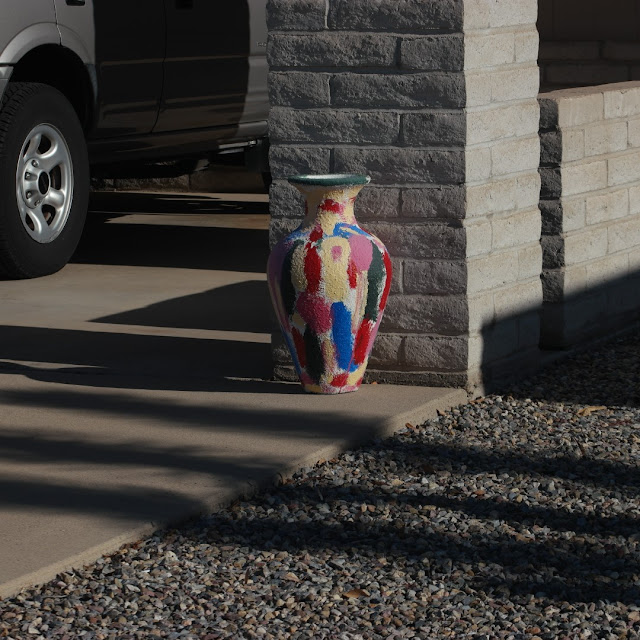This 50mm Minolta MC ROKKOR-PF f1:1.7 (SN 2181401) was manufactured in April of 1973 and was a regular standard lens with very good optics.
I found this lens at a thrift store for $15. The lens was attached to a Minolta 35mm film camera of that era.
Info Source: www.allphotolenses.com
The
PF in the lens name is a designation code designating the number of
groups and elements within a lens, with details as follows:
First Letter (no. of groups): T=3; Q=4; P=5; H=6; S=7; O=8; N=9.
Second Letter (no. of elements): C=3; D=4; E=5; F=6; G=7; H=8; I=9; J=10; K=11; L=12.
Therefore, for this lens designation (PF) means 5-groups with 6-elements.
f8 ISO200 1/250sec 0EV
f5.6 ISO100 1/250sec 0.3EV
f5.6 ISO100 1/250sec 0.3EV
f8 ISO100 1/200sec 0EV
f5.6 ISO100 1/200sec 0EV
In this photo above, I optimized a RAW image in Adobe Lightroom
The
coating materials on these early MC (meter coupled) lenses comprised
magnesium fluoride, plus “other ingredients”, and the actual coatings
were double coated in a process Minolta called “Achromatic Coating”,
giving superior colour rendition and light transmission when compared to
competing manufacturers.
Another term commonly seen in relation
to Minolta lenses is the term “Rokkor”. Like many other manufacturers,
Minolta employed a separate name for its lenses, in this case the name
“Rokkor” was chosen by Minolta founder, Kazuo Tashima, as a reference to
Mount Rokko in Japan, which is adjacent to the Minolta Factory
(Above information Reference site:
http://www.rokkorfiles.com/Lens%20History.html)
Links for additional information on this Rokkor lens and Minolta lenses in general - see:
http://minolta.eazypix.de/lenses/index.html
http://thesybersite.com/minolta/historical/Minolta_Lens_Chronology.htm
























































